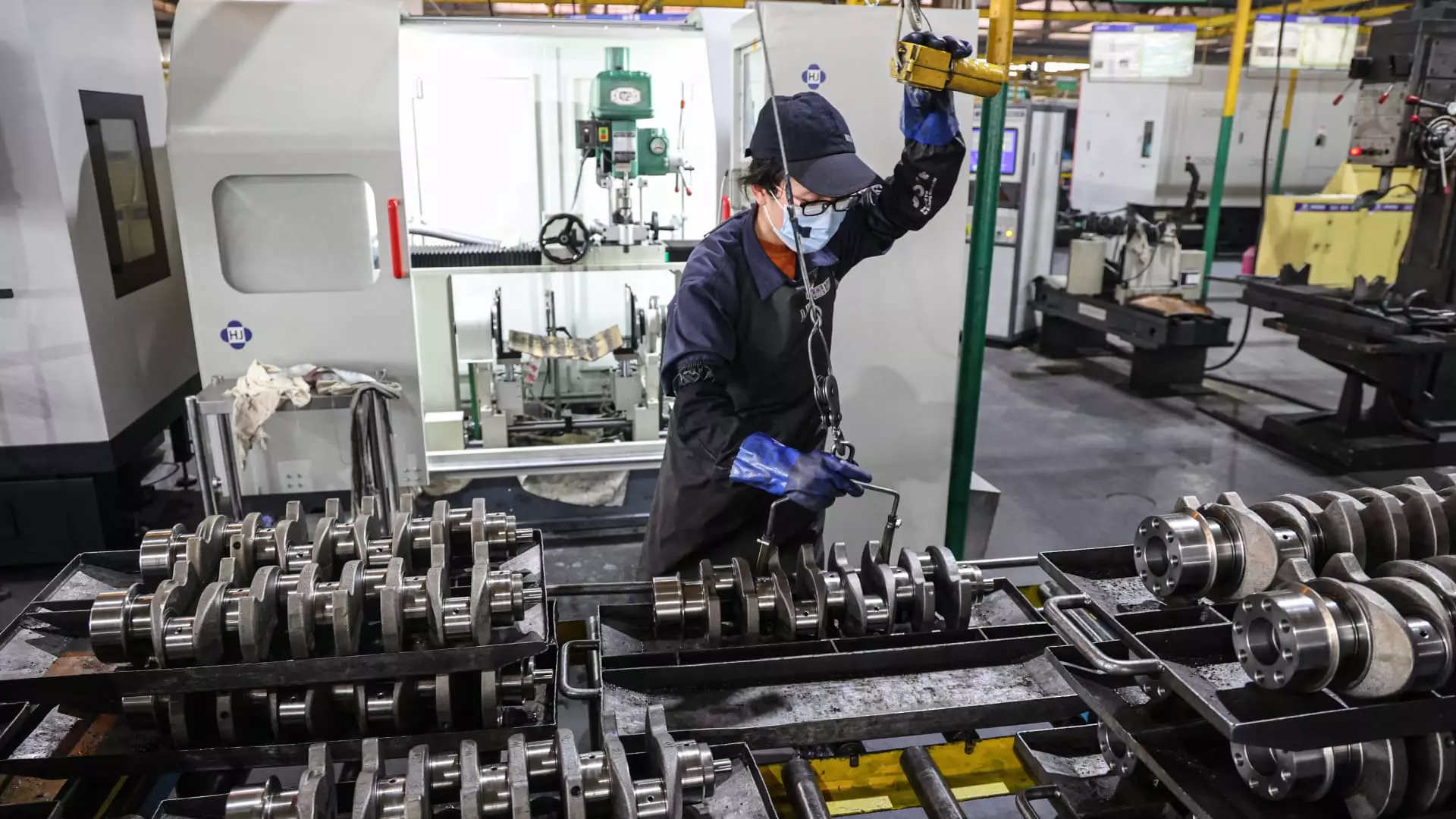In a landscape marked by tumultuous trade wars and economic uncertainty, China’s industrial profits have shown surprising resilience. Reports indicate a 3% increase in profits for April alone, continuing a positive trend from March, which saw a modest growth of 2.6%. Despite facing a barrage of U.S. tariffs imposed by former President Trump—a staggering 145% on imports—I find it fascinating to see how Chinese industries adapt and push back against such financial pressures. While skeptics might hastily claim that punitive tariffs would cripple the economy, the reality unfolds a more intricate narrative of adaptability and survival.
What stands out most in this progress is the underlying strength displayed by sectors such as equipment manufacturing and high-tech industries. These niches have managed to innovate and respond effectively to both domestic and global market shifts, suggesting that there’s more than just sheer luck at play. The 1.4% growth in cumulative profits over the first four months of the year sparks a flicker of optimism, even as I acknowledge the hardships tied to a slowing global economy and the shadows cast by ongoing U.S.-China tensions.
Trade Wars: A Double-Edged Sword
The trade battle led to mutual economic sanctions that could easily be mistaken for a self-imposed embargo. Yet, China has displayed a remarkable knack for pivoting, redirecting exports to new markets and demonstrating that resilience is more than a buzzword in their economic lexicon. Recent agreements to lower tariffs signal a willingness on both sides to reconsider their stances, and one must wonder if the pressures of economic reality might eventually forge a more collaborative instead of combative path.
Even amidst these trade tensions, exports did not tumble as alarmingly as predicted. While the U.S. has reduced its tariffs down to 51.1%, China’s own levies remain at 32.6%. This reciprocal adjustment hints at an acknowledgment of interdependence, making it clear that, while competition may drive policy choices, necessity often guides economic foundations.
The Dichotomy of Profitability
The story behind these industrial profits is not uniformly rosy. A stark division emerges between state-owned enterprises and their private counterparts. While private companies saw profits soar by 4.3%, state-owned firms suffered a decline of 4.4% in the same timeframe. This contrast raises urgent questions regarding the future of China’s planned economy. Are state enterprises becoming too reliant on government support, while dynamic private companies lead the charge towards innovation and profitability? The data suggests that these private entities possess a superior ability to adapt to changing circumstances, though they are not without their own vulnerabilities.
High-tech sectors, particularly in biopharmaceuticals and aircraft manufacturing, emerged as shining stars, reporting impressive gains of 9%. This suggests a shift towards industries that prioritize innovation over mere manufacturing capabilities. However, it simultaneously obscures the troubling declines in the mining sector, where profits plummeted by an astounding 26.8%—a stark reminder that not all sectors are sharing in this profit renaissance.
An Economy at a Crossroads
Analyzing the overall economic situation, it becomes evident that while pockets of growth exist, they are accompanied by deeper issues, especially concerning consumer demand. The 5.1% growth in retail sales, though positive, signals a slowdown from previous periods. The ongoing mismatch between supply and demand indicates that while industrial profits may improve, the consumers—the backbone of any economy—remain hesitant.
Weining Yu from the National Bureau of Statistics aptly describes this balancing act of resilience against the omnipresent threats of insufficient demand and falling prices. Such issues remind us that the triumphs of Chinese industries exist in a precarious state, teetering between opportunity and ongoing economic challenges. For those observing from a broader perspective, it is difficult not to feel a sense of cautious optimism mixed with skepticism.
In a world where geopolitical tensions and economic forces collide, the progress seen in China’s industrial profits serves as both a testament to human adaptability and a warning of underlying fragility. The question remains: will these profits translate into sustainable growth, or will they simply mask deeper cracks in an already complex economic foundation?

Leave a Reply